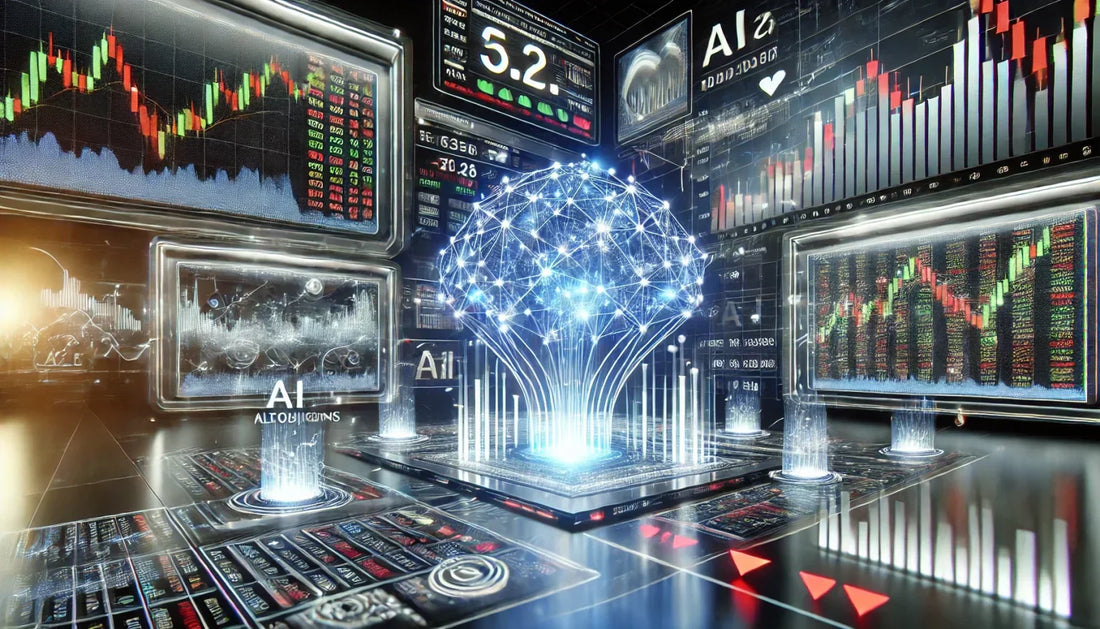
AI-Based Arbitrage: Exploiting Millisecond Market Inefficiencies
Share
Arbitrage, the practice of exploiting price discrepancies between different markets or platforms, has long been a staple of financial trading strategies. Traditionally, arbitrage opportunities have been fleeting, requiring traders to act quickly before the market corrects itself. However, with the advent of artificial intelligence (AI), the process of arbitrage has evolved to operate at lightning speeds—capitalizing on millisecond-level inefficiencies that are invisible to human traders. AI-based arbitrage is revolutionizing the way traders profit from market disparities, enabling them to make decisions faster and with more precision than ever before.
What is AI-Based Arbitrage?
AI-based arbitrage involves using artificial intelligence algorithms to identify and capitalize on price differences between various markets, assets, or financial instruments. The core principle behind arbitrage is simple: buying an asset at a lower price in one market and simultaneously selling it at a higher price in another. This strategy has traditionally relied on human traders or automated scripts that monitor different exchanges for pricing discrepancies.
However, as markets have become more interconnected and efficient, these opportunities have become rarer and more difficult to spot. This is where AI comes in—helping traders detect even the smallest price differences in real time and execute trades within milliseconds. By leveraging machine learning, deep learning, and other AI techniques, these systems are able to identify arbitrage opportunities that would otherwise be missed by traditional methods.
How AI Enhances Arbitrage Opportunities
The integration of AI into arbitrage trading strategies provides several advantages over traditional, human-based or rule-based systems:
1. Speed and Precision
One of the most important advantages of AI-based arbitrage is the speed at which it operates. Markets move in fractions of a second, and even the smallest delay can result in missed opportunities. Traditional arbitrage methods, which rely on human decision-making or pre-programmed scripts, often cannot react quickly enough to capitalize on fleeting price discrepancies. AI systems, however, can process vast amounts of market data in real time, detect inefficiencies, and execute trades at lightning speeds—far faster than human traders or rule-based systems ever could.
2. Machine Learning for Pattern Recognition
Machine learning algorithms excel at pattern recognition, which is crucial for identifying arbitrage opportunities. By analyzing large volumes of historical and real-time data, AI can learn to recognize patterns of market inefficiencies that would be difficult for humans to spot. Over time, these systems improve their ability to predict when and where arbitrage opportunities are likely to arise, allowing them to execute trades with greater accuracy and profitability.
For example, AI algorithms can continuously monitor multiple exchanges, looking for price discrepancies in assets like stocks, cryptocurrencies, or commodities. If the system detects that a particular asset is priced lower on one exchange compared to another, it can instantly execute a buy order on the lower-priced exchange and a sell order on the higher-priced exchange—locking in a profit before the price discrepancy disappears.
3. Real-Time Market Monitoring
AI systems are capable of continuously scanning and analyzing multiple markets and trading platforms simultaneously. This real-time market monitoring enables them to detect arbitrage opportunities as soon as they occur, even if they last for only a few milliseconds. The ability to monitor a vast number of markets across different geographies and time zones ensures that AI systems are always ready to act when a profitable arbitrage opportunity arises.
4. Risk Management and Automation
AI not only excels in finding arbitrage opportunities, but it also plays a crucial role in managing the associated risks. Arbitrage can be risky, especially when the price discrepancy is small and requires high leverage to generate a meaningful profit. AI systems can incorporate sophisticated risk management techniques to minimize the chances of losing capital. These systems can automatically adjust trade sizes, set stop-loss limits, and monitor exposure to reduce potential risks.
5. Arbitrage Across Multiple Asset Classes
AI-based arbitrage is not limited to traditional asset classes like stocks or commodities. With the rise of cryptocurrencies and digital assets, AI systems can also identify arbitrage opportunities across a wide range of markets. For example, cryptocurrency exchanges often have price discrepancies due to differences in liquidity and market conditions. AI systems can analyze data from dozens of exchanges, taking advantage of small price differences to maximize profits.
Examples of AI-Based Arbitrage in Action
Several firms and platforms are already using AI-based arbitrage strategies to gain a competitive edge in the markets:
- QuantConnect: QuantConnect is a cloud-based algorithmic trading platform that allows users to develop and deploy AI-based arbitrage strategies. The platform leverages machine learning and big data to identify and exploit price inefficiencies across different markets.
- Arbitao: Arbitao is a cryptocurrency arbitrage platform that uses AI algorithms to monitor multiple exchanges and identify arbitrage opportunities in real time. The platform's AI systems scan dozens of crypto exchanges to spot pricing discrepancies and execute trades at optimal times.
- Jane Street: Jane Street is a quantitative trading firm that utilizes AI-based arbitrage strategies to gain an edge in the market. Their AI systems continuously scan multiple markets for price differences and execute trades to capture arbitrage profits.
Challenges and Considerations
While AI-based arbitrage offers significant advantages, there are also challenges to consider:
- Competition: As more firms adopt AI-based arbitrage strategies, the competition for these opportunities increases. The rise of AI in arbitrage has led to the creation of highly efficient, automated systems, which means that the margins for arbitrage opportunities may become smaller over time.
- Market Efficiency: As AI-based systems become more widely adopted, markets are likely to become more efficient. Price discrepancies may become rarer, and arbitrage opportunities may be harder to find as AI systems collectively eliminate inefficiencies.
- Regulatory Issues: The use of AI in arbitrage trading may raise regulatory concerns, particularly in markets that are highly regulated. Some regulatory bodies may impose restrictions on the use of high-frequency AI trading strategies, especially if they contribute to market instability or unfair competition.
Conclusion
AI-based arbitrage is transforming the way traders approach market inefficiencies. By harnessing the power of machine learning, real-time data analysis, and automation, AI systems are able to identify and capitalize on arbitrage opportunities at speeds and scales that were previously unimaginable. While there are challenges to overcome, including increased competition and potential regulatory hurdles, the future of AI-based arbitrage holds tremendous potential for reshaping the financial landscape and creating new opportunities for traders around the world.
